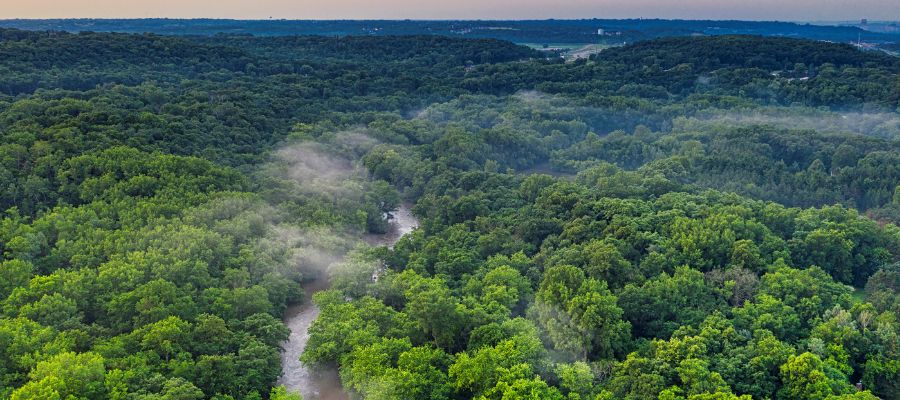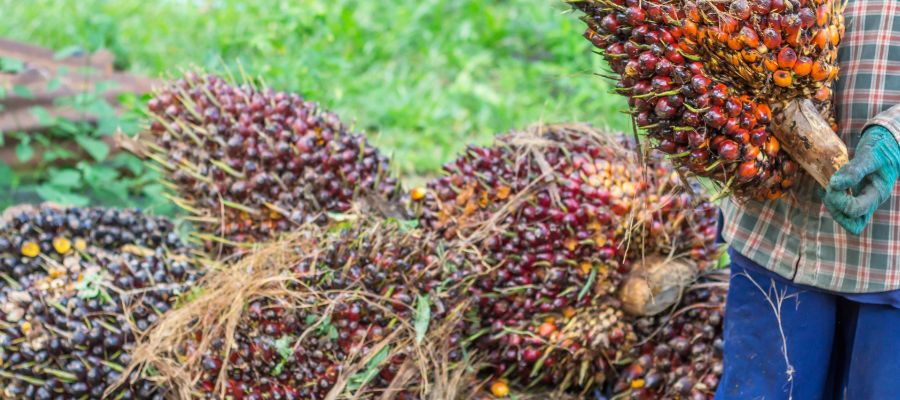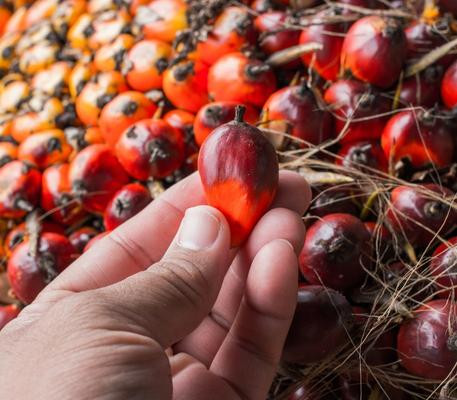Climate Wins That Inspire Action
Posted on Sep 20th 2022
Climate Wins That Inspire Action
Everywhere we turn, we’re inundated with terrifying headlines about the planet and the future of humanity. I fully agree that climate change is an immediate and extreme crisis and that we must act with an intense sense of urgency.
That said, I also have personally experienced how this barrage of disaster-oriented reporting can breed anger and hostility towards others and the sense that humans are simply incapable of coexisting with nature in a way that can reverse climate change. Unfortunately, this fatalistic mentality can sometimes lead folks (including myself) to throw our hands up and think, “who cares? If there isn’t a solution, I may as well focus on other things over sustainability.”
Lately, I’ve been inspired by stories of individuals, companies, nonprofits, and governments rethinking these paradigms and transforming how they operate to be in true alignment with nature, whereby their day-to-day practices strengthen the environment.
I imagine there may be some people and businesses in our EcoAlly community who are feeling similarly pessimistic about the world and who can benefit from the same type of optimistic inspiration that I often need.
Here, I share recent climate wins I’ve read about, how they’ve inspired my work, and what the eCommerce and packaging industries might be able to learn from the progress. For me, these stories are energizing my personal life and EcoEnclose’s strategic direction in a few ways:
- They encourage me to rethink how we solve problems and inspire me to go much deeper - into our supply chain, technology and innovation, and the efforts of the companies we work with.
- They inspire me to work towards a massive long-term vision while also celebrating the smaller, incremental steps of progress towards that vision.
- They remind me that you don’t have to be a big corporate entity to make a change (and in fact, the most transformative change can often come from smaller, less encumbered organizations)
- They humble me about the power of nature. Corporate sustainability is typically rooted in math equations. Calculate carbon emissions, fossil fuel usage, water usage, and pollution generated, and then systematically reduce these negative impacts (and quantify the reduction). These are necessary steps, of course, but the stories below show us that humans cannot manufacture and invent our way out of this (though those will be essential tools to leverage). They demonstrate how important it is to balance a highly quantitative approach (i.e., making X change results in emissions that are Y% lower) with a more holistic approach that respects how interconnected and self-healing nature is (and recognizes how little humans still truly understand this).
“We need acts of restoration, not only for polluted waters and degraded lands, but also for our relationship to the world. We need to restore honor to the way we live, so that when we walk through the world we don’t have to avert our eyes with shame, so that we can hold our heads up high and receive the respectful acknowledgment of the rest of the earth’s beings.” - Robin Wall Kimmerer
“The buildup of greenhouse gases we experience today occurred in the absence of human understanding; our ancestors were innocent of the damage that we’re doing. That can tempt us to believe that global warming is something that is happening to us – that we are victims of a fate that was determined by actions that precede us. If we change the preposition, and consider that global warming is happening for us – an atmospheric transformation that inspires us to change and reimagine everything we make and do – we begin to live in a different world. We take 100% responsibility and stop blaming others. We see global warming not as an inevitability but as an invitation to build, innovate, and effect change, a pathway that awakens creativity, compassion, and genius. This is not a liberal agenda, nor is it a conservative one. This is the human agenda.” – Paul Hawken
“We can't solve problems by using the same kind of thinking we used when we created them." - Albert Einstein
Several Countries Are Reversing Their Deforestation Trends

Environmentalists agree - preserving our old-growth forests is the “lowest hanging fruit” action we can take to reverse climate change. It is a strategy that keeps carbon sequestered, preserves plant and animal species, maintains biodiversity, helps support our local and global rainfall patterns, and so much more.
Unfortunately, the current news isn’t great on this front. At last year’s UN Climate Conference in Glasgow, a commitment was made by 141 countries to end deforestation by 2030. However, environmentalists (appropriately) reacted to the commitment with skepticism after seeing deforestation rates increase when a similar goal was set in 2014.
And unfortunately, the rate of deforestation remained stubbornly high in 2021, trends that do not point the world in the right direction to achieve this ambitious 2030 goal.
This chart, developed by the World Resources Institute, shows the deforestation rates in tropical forests (the forest type with the highest carbon sequestration rate).
For more information: https://news.mongabay.com/2022/04/2021-tropical-forest-loss-figures-put-zero-deforestation-goal-by-2030-out-of-reach/
That said, many wins are critical to celebrate and learn from. Behind the pessimistic big picture trends, there were many on-the-ground victories related to deforestation that we should applaud.
Here are two to learn from.
Indonesia: Indonesia’s deforestation rates have actually declined over the past decade.
This bright spot can be an essential model for other countries struggling to tame their deforestation rates. However, several policies have contributed to the decline:
- The country instituted a presidential regulation in 2016 to restore 2.4 million hectares of degraded peatlands. This regulation has helped reduce peatland fires, a significant historic contributor to deforestation.
- A now-permanent moratorium policy bans the clearing of primary forests and peatlands. This policy resulted in a 45 percent reduction in deforestation in 2018 (compared to 2002-2016).
- A policy referred to as “Reducing Emission from Deforestation and Degradation (REDD+)” enables citizens who protect forests to receive payments, to make it more economically attractive to preserve forests than degrade them.
- The government of the Indonesian province of West Papua revoked permits for 12 palm oil contracts covering more than 660,000 acres (an area twice the size of Los Angeles), three-fifths of which remains forested. Efforts by the palm oil corporations (none of whom were part of the Roundtable on Sustainable Palm Oil (RSPO)) to sue the government went nowhere - as their cases were thrown out in court. This signals a general shift in Indonesia in which the government, its Indigenous peoples, and citizens are united in their commitment to preserving natural resources rather than allowing their land to be exploited unchecked for short-term gain.
Costa Rica: This is an older but still inspiring success story!
In the 1940s, rainforests covered 75% of Costa Rica. An estimated 50% of that forest was gone by 1987.
At that point, the nation became the first tropical country to institute government-led initiatives to halt and reverse deforestation.
First, the country banned deforestation.
Then they introduced PES, a system that pays farmers to protect watersheds and conserve biodiversity. The PES scheme pays an average of $64 per hectare per year to provide essential forest protection, according to FONAFIFO, the nation’s industry fund.
Elicinio Flores, a Costa Rican farmer, says of efforts to restore 7 hectares of forestland, “I feel proud when I walk through the forest, not only for me but for my whole family … when I am no longer here, I know that my children will continue to look after it.”
“It is remarkable,” Stewart Maginnis, global director of the nature-based solutions group at the International Union for Conservation of Nature (IUCN), reported to CNN. “In the 1970s and 1980s, Costa Rica had one of the highest deforestation rates in Latin America, but it managed to turn that around in a relatively short period.”
How this has inspired EcoEnclose and me: Understanding the ecological importance of preserving intact forests and learning that - globally - the trends are not going in the direction we want is inspiration for us to double down on our Paper Commitment. It is easy to fall into the trap of thinking that tree paper is excellent for the planet and that the world has “figured out” sustainable tree forestry. But that way of thinking leads to 12 million hectares of deforestation annually. Seeing the success stories in countries like Costa Rica and Indonesia are great inspiration for us to play a far more aggressive role in maximizing the use of recycled content in packaging and building up next-generation fibers and other non-tree inputs into the paper stream.
Movements Are Underway to Transfer Stewardship and Control of Land Back to Indigenous People

“In the Indigenous worldview, people can be a force for good and regeneration on the land,” said Robin Wall Kimmerer, a professor of environmental and forest biology at the State University of New York College of Environmental Science and Forestry an enrolled member of the Citizen Potawatomi Nation. “And I think that is a perspective we desperately need right now.”
Research has shown that Indigenous control of lands seems to reduce deforestation as much (and sometimes more than) as formal government land protection. This makes intuitive sense to anyone who has read or researched about indigenous cultures. While different local communities have their own unique beliefs and practices, indigenous groups often have millennia of generational knowledge of their lands. As a result, they tend to take a symbiotic view of nature - recognizing how important it is that the land and humans not only coexist but mutually support each other for the two to thrive together long-term.
Because of this, Indigenous peoples and local communities tend to conserve more effectively than national parks and government-protected forestland. Rather than simply “leaving nature alone” (a solid first step, especially for communities that don’t have generations of knowledge of the land), Indigenous peoples influence and alter their lands in ways that can be a net positive.
Academic research supports this. One study, for example, found that Indigenous territories harbored more biodiversity than protected areas in Brazil, Australia, and Canada. Another study by over 20 scientists found that “biodiversity is declining more slowly in areas managed by [Indigenous peoples and local communities] than elsewhere.”
Luckily, according to the ICCA, a vast amount of land ( estimated at 32% of land worldwide) is owned or governed by Indigenous peoples or local communities, defined as groups whose livelihoods are rooted in the land. Compare that to the fact that the government protects just 14% of the land. Other research found over 36 percent of the world’s remaining intact forests are within Indigenous territories. But we need to do more on this front!
Here we highlight two specific ways that Indigenous land management and ownership have been transferred in ways that support a myriad of social justice and environmental goals.
Wildfire Management Partnerships: Indigenous people who have lived in their regions for thousands of years actively used fire ecology or strategic ancestral burning practices to clear undergrowth, strengthen the soil, and maintain forest areas’ natural biodiversity and ecosystem. When practiced effectively, these methods drastically reduce the risk of rampant wildfires. “We coexist with fire; we need fire, and fire needs us. It’s a different way of looking at the forest,” said Amy Cardinal Christianson, an Indigenous fire expert in Canada.
After thousands of years of the Indigenous practice of fire ecology across the US, the Weeks Act banned this action in 1911. The Weeks Act made lighting all fire illegal and required immediate suppression of any fire. Since then, forests began to grow unchecked, without the regular clearing of underbrush that native peoples prescribed. This policy change is essential to why we have such ravaging wildfires today.
Recently, the world has woken up to this. In Northern California, the Karuk and Yurok tribes have partnered with the Forest Service to manage land for traditional values and wildfire management. In Northern Australia, fire-prevention programs on Aboriginal lands have cut destructive wildfires in half, a step that benefits the planet and helps generate revenue. In addition, organizations that practice cultural burning have leveraged the country’s carbon credits program to earn $80 million.
“Government agencies have realized their dire mistake in trying to exclude fire from the forest, and unfortunately, it’s taken these raging wildfires that happen year after year to realize the terrible mistake,” said Margo Robbins, a member of the Yurok tribe. She heads the Cultural Fire Management Council, a collective of tribes in Northern California that lead prescribed burns on their lands. “They’re seeking answers and seeking out Native people as to what should be done and how to go about it.”
Returning Lands to Native Communities Who Go on to Heal and Restore Ecosystems: In 2020, the National Bison Range in western Montana was returned to the Salish and Kootenai Tribes, who are now managing the range’s bison, including those that leave the Yellowstone National Park to graze on U.S. Forest Service land. This has led to a dramatic revitalization of bison populations in the region.
In California, a land trust transferred almost 1,200 acres of redwood forest and prairie to the Esselen tribe. In Maine, the Five Tribes of the Wabanaki Confederacy reacquired a 150-acre island. The Nature Conservancy began transferring ecologically important land under its Indigenous Peoples and Local Communities Program.
Land nationwide is being transferred back to tribes, in part to achieve critical conservation goals, with the recognition that indigenous management styles of lands (often referred to as Traditional Ecological Knowledge (TEK)) are not only critical to our environmental movement, they are also extremely difficult for non-Indigenous Peoples to immediately comprehend and adopt.
One of my favorite examples of this is a land transfer that took place in Australia almost a decade ago. Governments bought 19 properties in New South Wales to restore these fertile wetlands. The Nature Conservancy and the tribal council of the Nari Nari (Indigenous people who have lived in the region for over 50,000 years) won the bid to manage the land.
They removed the agricultural irrigation infrastructure, allowing water to flow as originally intended. Thousands of invasive species were hunted, including feral pigs, deer, foxes, and cats. Quickly, species began to reemerge, including the golden perch, southern bell frogs, egrets, black swans, and spoonbills. In 2019 the Nature Conservancy transferred the land to the sole ownership of the Nari Nari.
How this has inspired EcoEnclose: EcoEnclose donates to The Nature Conservancy. While we typically donate to their general funds, we are now prioritizing opportunities to contribute to initiatives that will transfer the land back to local communities. Additionally, while EcoEnclose is primarily focused on circularity - recycled content and recycling so that packaging can be made out of packaging - we are also constantly looking for more regenerative virgin materials as well - such as non-tree sources for virgin paper and agricultural crops as a replacement for fossil fuels into plastics. Many of these would require significant land use to be viable solutions at scale. When we find materials for virgin packaging that would live up to our ecological standards, we are inspired to establish sourcing partnerships that enable land to be managed, stewarded, and owned by indigenous communities.
Rewilding in Action at Knepp Farm Showcases How Nature Behaves When Left to Its Own Devices

Knepp Farm is a 3,500-acre property less than 50 miles from London. Charlie Burrell inherited the land from his grandparents in 1983. But, he found that the clay and limestone soil (“like concrete in summer and unfathomable porridge in winter”) made it impossible to run a successful dairy farm.
He tried…for seventeen highly unprofitable years.
In February 2000, he sold his dairy herds and farm machinery, sold some land, and cleared out his debts.
Soon after, Burell and his wife, Isabella Tree, became inspired by a visit to the Oostvaardersplassen nature reserve in the Netherlands in 2002 and the work of Dutch ecologist Dr. Frans Vera.
This compelled them to establish a “hands-off” naturalistic grazing system across the entire estate.
In 2002, they received Countryside Stewardship funding to restore the 350-acre Repton-designed parkland around the mansion within their land. Soon after, they introduced a variety of animals that would have once roamed the British countryside, including English longhorns, red and fallow deer, Exmoor ponies, and Tamworth pigs (as proxies for the aurochs, tarpan, and wild boar that once roamed the land but were not allowed by the government). By 2006 the vast majority of the land had gone essentially unmanaged for almost six years.
Then, after significant backlash from neighbors and others in the community for the eyesore that the property was becoming, the estate began to show great visible proof points that the “experiment” was “working.”
In 2009, ravens, thirteen species of bats, and 60 other species of conservation importance were spotted on the farm, many for the first time in over a hundred years. By 2010, Knepp supported 1% of all nesting nightingales in the UK! By 2011 there were eleven singing male turtle doves at Knepp, singing a sound that was previously unheard of by most people living in the region. By 2015, the property had become the country’s largest breeding colony of Purple Emperors. In 2016, they saw their first pair of breeding falcons and a black stork (one of the rarest birds in Western Europe). They then removed the artificial banks from a river within the project area, allowing the river to flood the surrounding meadows more naturally, and - after disabling weirs throughout the river, sea trout were spotted migrating upriver. In 2020, beavers were reintroduced to the estate, and a white stork was observed raising chicks, which was the first time this had been observed in the country in 600 years.
Today, Knepp farm is profitable, generating income from organic and free-range meat, eco-tourism (visitors flock to the estate to go on safaris and stay in glamping tents), and farming subsidies (such as Countryside Stewardship).
How this has inspired EcoEnclose: This case study is a poignant reminder that nature heals and restores itself in ways that humans (and our science and analytics) can’t begin to predict. In an interview, Charlie Burell said, “We have purposefully not tried to recreate habitats for the benefit of specific species like nightingales, but to let nature take its course and see what returns of its own accord. The results have been beyond what we could ever have hoped for.” I often keep this in mind after reading about this fantastic success story. When I drive to EcoEnclose and observe the well-manicured turf grass across our industrial complex, I find myself exploring ways to convert grass into a more wild pollinator-friendly environment. In reviewing the pros and cons of “plant a tree” schemes and whether or not they make sense for EcoEnclose, stories like this lead us to pursue opportunities to preserve intact forests (by avoiding virgin paper) and look for initiatives that allow for natural land restoration instead (recognizing that people rarely plant trees as thoughtfully as nature heals itself).
Algae Continues to Be An Eco Superhero Across So Many Industries
Entrepreneurs, scientists, and environmentalists continue to find new ways to leverage algae (including seaweed and phytoplankton), which is incredibly efficient at sequestering carbon and transforming sunlight into energy. Here are just a few examples!
Recently, the Port of Baltimore won an Award of Excellence for Environmental Mitigation for the port’s use of Algal Flow-way Technology in a demonstration project. The technology pumps water from the Patapsco River onto a raceway within the Dundalk Marine Terminal. The water flows over a surface designed to encourage algal growth. As the algae grow, it cleans and oxygenates the water before it’s returned to the river, removing excess nutrients and adding oxygen, helping to combat dead zones - the biggest threats to a restored Bay.
Researchers at the University of Colorado Boulder have invented a way of using algae to create carbon-neutral cement by using biogenic limestone grown by algae in place of quarried limestone, concrete’s key, and most carbon-intensive ingredient. The solution was developed based on the science of how coral reefs create their natural limestone. Suppose this solution was applied at scale to a notoriously dirty industry. In that case, experts believe up to 2 gigatons of carbon dioxide emissions per year could be eliminated (this is the equivalent of taking more than 400 million vehicles off the road!).
Algae’s potential as a highly efficient and nutrient-dense food is also gaining recognition. A company known as Nonfood recently launched the Nonbar, an algae-based snack bar that contains 37% algae and aquatic plant ingredients. The bar has micro and macronutrients, nine grams of clean protein, antioxidants, vitamin A, calcium, and absorbable iron. Algae could also replace fertilizer-intensive crops such as corn and soy as fillers in processed foods, including fish, pig, and cow feed. Some studies have shown that if humans turned to algae to help sustain animals and ourselves, the world could feed an increasing population without increasing farmland acreage. Some believe farmland acreage would significantly decrease, allowing for natural forest and prairie land to be restored.
Seaweed isn’t just a resource-efficient alternative to traditional animal feed; it can also reduce emissions in other - interesting - ways. For example, scientists have found that feeding cows seaweed reduces the amount of methane they produce (through their farts and burps). Methane is a greenhouse gas that is more than 80 times as potent as carbon dioxide (though it breaks down more quickly). A quarter of all methane is produced directly from fermentation by cows. “We observed a reduction in methane up to 20%,” said Andre Brito about the impact of seaweed as cow feed, associate professor of dairy cattle nutrition and management at UNH. “And 20% is a start. We are exploring different types of seaweeds, and the goal is to use locally produced seaweeds.”
Finally, several companies have emerged seeking to leverage kelp as an input into packaging. Companies like Notpla, B’Zeos, Sway, FlexSea, Evoware, and Kelpi are trying to pave the way. Several of these companies are focused on ensuring that the way their kelp is produced and harvested supports broader efforts related to restoring kelp and sealife ecosystems, economic development in coastline communities, and ensuring no wild kelp is improperly farmed. In addition, they recognize how important it is that commercial kelp farms actively reverse the decline of naturally growing kelp in the ocean.
How this has inspired EcoEnclose: Testing new, highly ecological concepts, converting them into market-ready products, and bringing them to our EcoAlly community is one the best parts of our jobs. We did this with Algae Ink, and now we use Black Algae Ink more frequently than our standard carbon black ink. We continue to seek ways to make algae ink more broadly accessible. We are constantly on the lookout for sustainable new applications of algae across the eCommerce and packaging industry. Even beyond algae, these stories of exciting innovation are a reminder of how many incredible people are out there, trying to find and do “better.” One of the most critical roles EcoEnclose can play is to partner with inventors and scientists, helping them test, commercialize and scale to accelerate the success and impact of the most groundbreaking technologies that emerge.
Sustainable, Organic, Smallholder Farmer-Focused Multicropping Is a Truly Viable Alternative to Monopolistic Monocrop Operations
And arguably, this type of farming must become the future of agriculture if we are to reverse climate change.

The oil palm tree efficiently produces high-quality oil with a comprehensive set of uses. It is used as cooking oil in developing countries, food products, cosmetics, soaps, detergents, and biofuel. Some estimates suggest that palm oil is in half of the packaged goods found in most grocery stores. In addition, palm oil offers a far greater yield at a much lower cost of production than other vegetable oils.
Many consumers and brands know how problematic palm oil production has become. Palm plantations are spreading across Asia, Africa, and Latin America. They have historically often been created by clearing intact tropical forests, forests that form critical habitats for endangered species and provide essential resources for many local communities.
Almost 20 years ago, Dr. Bronner’s shifted to fair trade and organic sources for its primary raw materials - palm, olive, coconut, and mint oils. Given how much tropical forest deforestation is driven by palm oil production, it would be tempting to do away with the oil and find a more sustainable alternative. However, any closer inspection of the issue reveals that it would be much worse for the planet if brands switched from palm oil to other vegetable oils. Palm oil is far more resource efficient than any other oil; growing it requires far fewer resources.
So, the challenge facing brands like Dr. Bronners is to find a palm oil source that doesn’t lead to the destruction of existing forests. Of course, many brands in this position simply look for certified input and call it a day.
Instead, Dr. Bronners decided to spearhead a much more profound solution that recognized that the problem to solve wasn’t palm oil itself but the monolithic monocrop low-cost at all-costs operations that grow and process the oil.
In 2007, the company financed the development and scale-up of Serendipalm, which worked with hundreds of smallholder oil palm farmers in Ghana, helping them transition from monocrop farms to dynamic agroforestry operations and establishing oil processing operations. Dr. Bronners now purchases all of its palm oil from this sister company. Its 500 farmers are paid fair prices for their palm fruits. They have supported them with mulch and organic agriculture training, significantly improving their soil fertility, yields, local biodiversity, and profitability. Serendipalm employs 250 workers in its oil mill, primarily local women, who experience fair working conditions and wages.
How this has inspired EcoEnclose: Many wonderful brands focus some energy on “internal” change but then create a large portion of their positive impact by donating much of their profits (what Gero Leson - author at Dr. Bronners - refers to as outward-facing activism). Dr. Bronners, on the other hand, has been primarily focused on inward-facing activism - how the company treats employees and suppliers of agricultural ingredients and the environment. Yet, they never stop amazing and inspiring me with their commitment to seeing every aspect of what they sell as “in their control.” When they see an ingredient or practice in their supply chain not living up to their standards, they invest heavily in fixing it (even if it means building a brand new business because the optimal solution does not exist)
Aggressive Legislative Action Nationwide (and Worldwide) Is Finally Being Instituted

Over the past year, there has been quite a few environmental legislation wins that are worth celebrating! Here are just a handful.
The Inflation Reduction Act will invest $369 billion in climate solutions and environmental justice, putting the US on a path to 40% emissions reduction by 2030. The bill expands access to clean energy, funds the electrification of many public vehicles, provides generous tax credits for electric vehicles, invests heavily in air monitoring and community-led solutions in communities that disproportionately experience the effects of climate change, incentivizes farmers to practice more sustainable farming, funds the protection of intact forests and coastal ecosystems, invests in endangered species recovery plans, and so much more.
Earlier this month, Australia passed its first climate legislation in decades, a bill that includes the national targets of cutting emissions by at least 43% by 2030 (compared with 2005) and reaching net zero by 2050.
Mexican President Andrés Manuel López Obrador issued a decree in 2021 that called for a phase-out of glyphosate and GMO corn by January 2024. As expected, this has since been met with backlash, legal battles, and extensive pushback from the US. While the decree may not hold, it signals a significant trend and puts our monopolistic seed and chemical companies on notice that they can’t simply lobby their way out of GMO concerns long-term.
Maryland, Connecticut, and California are among the many states that have enacted ambitious climate legislation this year, with goals that go even further than what has been set by the federal government. Additionally, Extended Producer Responsibility, legislation requiring brands to fund and support the recycling and responsible disposal of their packaging, has passed in Maine, Oregon, and Colorado (and the concept gained legislative steam in over a dozen other states). Many countries across Europe, Latin America, and Asia have adopted EPR schemes.
How this has inspired EcoEnclose: Like most environmentally focused companies, we believe that the transformational environmental change the world needs will be driven by a combination of actions - across government, companies, individuals, consumers, and nonprofits. While our day-to-day efforts focus on advancing our product set and innovating with our supply chain partners, we have also been staunch and vocal advocates for these statewide and federal policies and will continue to make this a key aspect of our work. This momentum and the success we had as a vocal supporter of Colorado’s EPR legislation is inspiration that these efforts actually matter.


